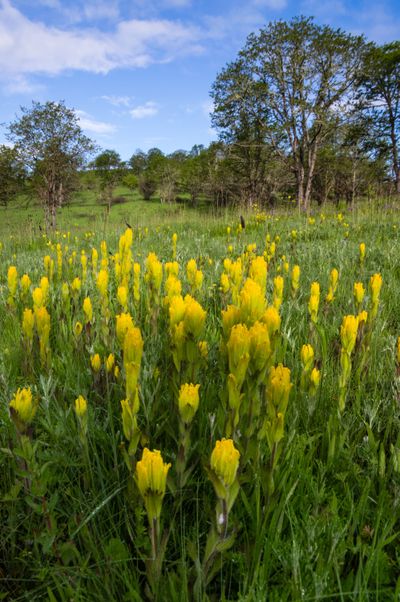Western Washington’s golden paintbrush flower could be removed from endangered species list

OLYMPIA – A flower in Western Washington and Oregon may be removed from the nation’s endangered species list after decades of work to save it.
The U.S. Fish and Wildlife Service proposed late last month to remove the golden paintbrush from the endangered species list.
The yellow flower that resembles an artist’s brush is native to the Pacific Northwest, historically found from southwest British Columbia through Oregon’s Willamette Valley. It mostly lives in prairie lands.
More than 100 species have been delisted or downlisted for recovery since the Endangered Species Act went into effect in 1973, said Noah Greenwald, endangered species director at the Center for Biological Diversity. That number shows “impressive success.”
“It’s decades of work to bring a species back from the edge of extinction,” said Quinn Read, the center’s Oregon policy director.
By the mid-1990s, Read said there were only 10 populations of the flower in Washington and British Columbia. It was extinct in Oregon and was “in sore need of help,” Read said.
Development, fire suppression on its prairie habitat and agriculture all likely contributed to the flower’s endangerment, Read said.
During the past 24 years, multiple state and federal agencies worked together on a recovery plan for the plant. Most of the plan involved reintroduction, especially in Oregon, where the species was replanted in areas where it was likely to thrive.
“It’s been a continuous effort,” Read said.
Because of those efforts, there are now 48 total populations spread out among Washington, Oregon and British Columbia. Most of those exist on land owned by the state, the federal government or conservationists.
Protecting the golden paintbrush has also led to the protection of its habitat as a whole. Now, the Fender’s blue butterfly may also be delisted on the endangered species list because of this effort. The butterfly is also native to the Willamette Valley in Oregon.
“When you protect a species, you’re also protecting every other species that depends on that habitat,” Read said.
Two other plants in Washington, water howelia and Bradshaw’s lomatium, were delisted on June 16, Greenwald said. Both plants are often found on the west side of the state.
More than 99% of species protected under the endangered species act survive today, Greenwald said, but it takes years and multiple agencies working together to bring them back.
Some species can sit on the endangered species list for decades before any recovery plan is implemented, Read said.
The golden paintbrush is a species that humans are mostly responsible for wiping out, Read said, but with a collective effort, it was saved.
“It’s really important to celebrate these successes when they come,” Read said.
The next steps will be a formal rule-making process. A request for the removal was already filed by the U.S. Fish and Wildlife Service, and now there will be a comment period that ends Aug. 30. There will then be a public hearing, according to the U.S. Fish and Wildlife Service website. Part of the decision to move it off the list will involve ensuring there are ongoing protections and monitoring so nothing undoes all the work to protect it, Read said.
Because most of the current populations are on public land, there is a good likelihood it will be approved, she said.